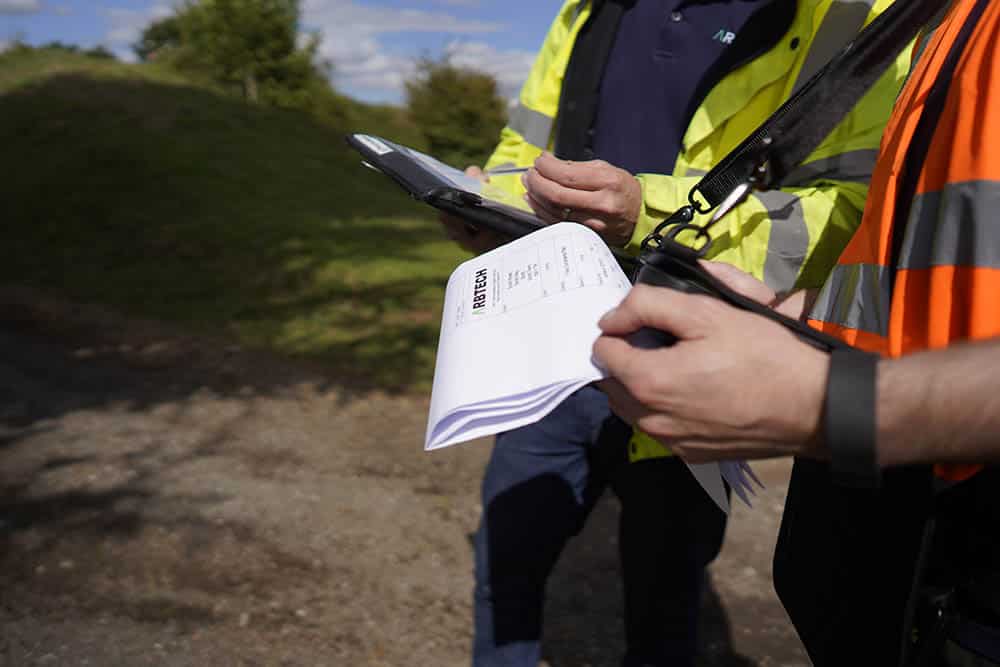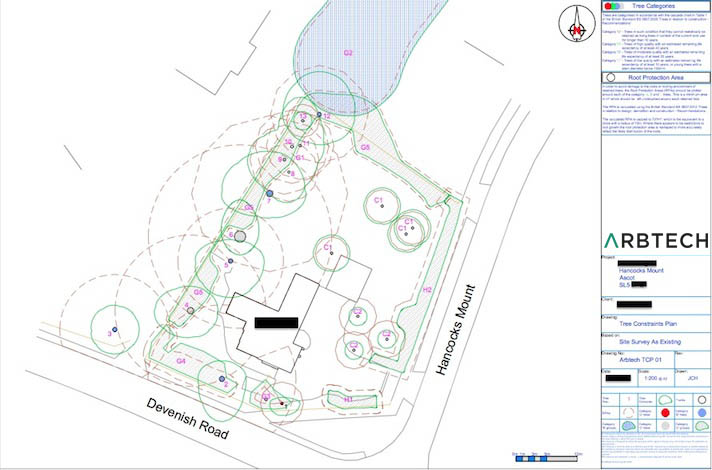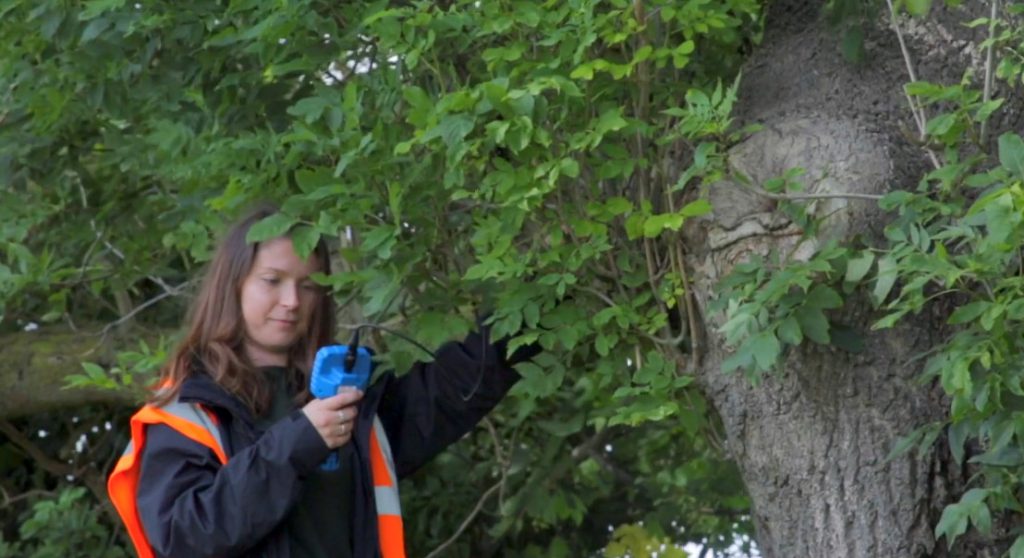Everything You Need to Know About BS5837 Tree Surveys

Existing trees on a development site can cause issues with design, demolition and construction work. If you’re set to undertake a property or land development project where trees that are directly present or in close proximity could be impacted negatively by your planned works, moving ahead without consideration is only likely to result in penalties, fines, delays and planning refusal.
Evaluating tree health and the overlap between a planning project and nearby trees will help to solidify a harmonious and sustainable relationship between the two factors. Developers are advised to book a British Standard BS5837 Tree Survey, as it will prevent impending legal issues, all sorts of potential problems throughout the construction phase, and otherwise present health and safety concerns.
BS5837 Tree Survey
The BS5837:2012 tree survey is common in planning and appears as the immediate response to confirming whether any constraints are likely to occur between trees and the project. Once an assessment has been completed, the developer will be able to move forward knowing if any trees are under existing protection and the necessary steps to take to move forward, alongside assurances over their planning application.
Every local council has a tree officer responsible for weighing the council’s policies on tree management against your development ambitions and providing a recommendation to your case officer regarding the decision to grant or refuse planning permission. At this point, the results of a BS5837 tree survey will be used to support the decision following an arboricultural consultant’s efforts to account for tree retention, removal or demolition and compensation as necessary.
BS5837 Survey Schedule
In simple terms, a BS5837 survey will see an arboriculturist attending a development site and reviewing all trees in the local vicinity. Each tree will be branded with a predetermined category to indicate the current condition of the tree and decide the most suitable outcome for it. A thorough above and below-ground assessment will help to establish the value and species of every tree, as well as such details as the canopy cover, crown spread, tree roots and root protection area.
Undertaken using Trimble® Juno handheld (Global Positioning System) location device and PT Mapper Pro, the arboricultural surveyor can store extensive information about each tree including spatial information and accurately plot the trees straight onto an ordnance survey or topographical survey map. Results from a BS5837 will instruct the developer on appropriate next steps for the trees and demonstrate to the local authorities that laws protecting trees have been followed.
BS5837 Tree Reports
Upon completion of BS5837 surveys, the tree consultant in charge of the assessment process will put together an arboricultural report. The purpose of BS5837 reports is to display the results from the inspection and the grading for each tree alongside evidence that it is possible to continue the development and grant planning consent provided the developer follows their instructions.
The local planning authority will be accepting of the project as long as the BS5837 report has been able to show that high-quality trees will be protected, trees that are disrupted by the development will be safely relocated, and low-quality trees or trees that are dead, dying or a health and safety concern will be destroyed and compensated for with the planting of new trees.
If any additional information is needed to support the BS5837 tree report such as an arboricultural method statement (AMS), arboricultural impact assessment (AIA) or Tree Protection Plan (TPP), the tree surveyor can either include these in the report or conduct further surveys at a later date. The report can also recommend the use of other assessments, such as an AMS, IAI or TPP.
Tree Constraints Plan (TCP)
Another component in a tree report is a Tree Constraints Plan (TCP) to set out all trees using an accurate map of the site, supplied to clients in AutoCAD and PDF format.
A client’s architect or design team has the ability to overlay the BS5837 drawing across existing plans and drawings of the development site, making it easier to see where trees appear, the intentions for each tree, and how the presence of trees could overlap with the aims of the project.

BS5837 Tree Categories
As previously mentioned, retained trees, relocated trees and destroyed trees are confirmed using a grading system. The BS5837 tree categorisation table is used, with size, health, longevity and amenity contribution all coming together to form the overall value and the eventual score.
BS5837 Categories
Category A
- High-quality trees
- Good specimens
- Offer important qualities such as ecosystem services or cultural, street scene or historical value (like Robin Hood and the Major Oak in Sherwood Forest)
- A remaining amenity contribution of at least 40 years
- No local planning authorities will allow any intervention except in rare circumstances
Category B
- Similar to Cat A trees but with less cultural, street scene or historical significance
- A remaining amenity contribution of at least 30 years
- Local planning authorities will aim for retention unless under extenuating circumstances such as building a clinic or school following compensatory planting
- Building nearby and within root protection areas is possible through innovative use of engineering, such as piled or cantilevered foundations, and tree-friendly surface treatments, such as GeoSynthetics® CellWeb m
Category C
- Low-quality trees
- A remaining amenity contribution of a least 10 years
- Losing them is rarely considered a planning risk, making them worth relocating or destroying
- Compensatory planting will be a condition afterwards
Category U
- Dead, dying or dangerous trees
- A remaining amenity contribution of less than 10 years
- Losing them is never considered a planning risk, making the destruction of the trees mandatory
- Removal of trees will be done in any event as a part of sound arboricultural management
Canopies and the Root Protection Area
During an assessment, each tree is evaluated for potential issues, both in terms of above and below-ground observations. Protecting the canopy spreading from the tree at ground level isn’t complicated and can be as simple as erecting tree protection fencing such as a Heras fence around the tree with signage to ensure that no machinery damages it. Below-ground considerations, however, are more difficult and involve the BS5837 root protection area calculation to gauge what rooting environment is required for the tree to sustain itself.
A root protection area is calculated by working out the radius of the area around the tree, with the tree sitting at the centre of a circle. The diameter of the stem at 1.5 metres above ground will then be recorded and multiplied by 12, and other metrics are available for multi-stemmed trees. For example, if a tree had a stem diameter of 0.5 metres, the developer would need to avoid disturbing the ground around the tree by up to six metres away.
That said, it doesn’t mean any intervention with the ground surrounding the tree is strictly forbidden, as certain activities could be worth carrying out anyway. Any practices that could harm roots will be scrutinised because they need to respire at a cellular level and require oxygen to survive. Most tree roots are in the top 600 millimetres of soil and barely any go down more than a metre, leaving them spread out in a network across a wide area that is sensitive to compaction.
Starting Your BS5837 Survey
It is easy to instruct our team to conduct an initial survey on tree quality. As a BS5837 tree survey will play a significant role in your planning process, you will want to understand the cost, consultants and booking details involved in completing the inspection.
In the section below, we’ve explained key information surrounding BS5837 tree surveys:
BS5837 Cost
Depending on the number of trees on the development site, the BS5837 tree survey cost will vary from client to client. Other factors that could affect the price include the size of the site, the location and the availability of our tree surveyors.
We make our pricing fair by starting the BS5837 cost at £349 and only adding on what we need to. Operating in this way prevents anyone from paying more than they need to, especially in the case of developers on small sites with minimal tree numbers.
BS5837 Consultants
Our fully qualified tree consultants are able to provide you with arboricultural impact assessment and arboricultural method statement details, as well as any other information, including a reliable proposed list of the trees retained, relocated and destroyed on your site. Using our design, demolition and construction recommendations for trees in relation to planning, we’ve been able to support countless projects and help to obtain planning permission for numerous clients.
From air spading for uncovering roots to tree climbing and grading trees in suitable categories to assisting with other planning matters on any site that contains trees, we can step in to help with any and all problems you may have. The BS5837 consultants in our ranks are all qualified, educated, licensed and capable, and following collective years of servicing clients up and down the country, we are able to lead a BS5837 tree survey on your site.
Contact Arbtech Today
Developers commonly use a BS5837:2012 tree survey as a way of breaking down tree quality across a site and deciding which trees will remain on the site, move elsewhere or be destroyed and compensated with the planting of new trees. If there are trees on your site, it would be worth reaching out to Arbtech and booking a tree survey to ensure that none of your trees are protected and nothing you are planning could cause harm to them.
Remain in line with the BS5837 tree survey requirements by speaking to our team and requesting a quote. Either call our administration team directly over the phone, email us, fill out an online quote form on our contact page, or get in touch with us using our social media platforms. You will then be given a free quote based on your details, and if you want to move forward, we will be more than happy to arrange a date and time to attend your site and help with your planning application.
Internal Resources
- Infographic Flow Chart: Do I need a BS5837 Tree Survey?
- See our full list of tree surveys


